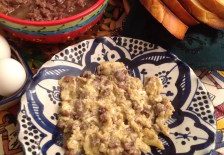Famous Cities in Morocco Series (Episode 10 of 13): Chefchaouen
By: Claire Boyle / Arab America Contributing Writer
Introduction:
The country of Morocco has so many interesting towns and cities as well as beautiful landmarks. From the astonishing city of Casablanca to Marrakech, Fes, and Rabat; Morocco has everything one might hope to experience. These places boast historical monuments, such as the Hassan II Mosque, the Jemaa el-Fnaa, and many others. In this article series, we will be featuring cities and landmarks in Morocco that are historically and culturally significant. In this tenth installment, we will be traveling to Chefchaouen, and then we will learn about some of their religious architecture as well as the city’s exquisitely beautiful marketplace. These are the Grand Mosque and the Medina of Chefchaouen. Finally, we will learn about the history of the cities themselves as well as some of their famous and associated landmarks.
Historical Synopsis and Background of Chefchaouen:
Chefchaouen, also known as “Morocco’s Blue City,” is a city with much history, beautiful examples of Moroccan architecture, and a place where numerous tourists from all around the world go to enjoy its stunning scenery. Chefchaouen was founded in 1471 as a kasbah to protect Morocco from Portuguese invaders. Chefchaouen has also been the home of numerous tribes over many centuries, including the Ghomara and Moriscos, among others. During the medieval period, the city was captured by the Spanish and for many decades, the town and other parts of Morocco became a protectorate of Spain until the early 1920s. In the 1920s, Chefchaouen briefly changed hands from the Spanish to those of the French, but in 1926, the Spanish again recaptured the city. So, you might be asking, “why is Chefchaouen called the “Blue City,” and “what is the symbolism behind the color?” Well, no one knows for sure, but it is thought that the “blue symbolized the sky, heaven, and a reminder to lead a spiritual life,” but others claim it was a strategy to repel mosquitoes, but regardless of the reason, we can all see that it is a peaceful color and it truly makes the city unique from all the other beautiful places that Morocco has to offer.
Historical Landmarks—Grand Mosque of Chefchaouen and the Medina/Souk of Chefchaouen:
Grand Mosque of Chefchaouen:
The Grand Mosque of Chefchaouen has an interesting history just like the city that it belongs to. It is thought that the mosque was instituted around the same time as the city’s founding in 1471 by Moulay ‘Ali ibn Rashid al-Alami who was also responsible for establishing Chefchaouen as well. It is also possible that the Grand Mosque was not even established until the 16th century. Still, we will never know for sure of its origins since the historical sources are probably lost. Furthermore, the shape of its minaret is indicative of architectural styles under the sultans of the 17th century. In the past, the mosque was also a center of learning and not just for Friday prayers as it offered “lessons in fiqh or Islamic jurisprudence and law, and it also had a dormitory for students.” The mosque has been through numerous restorations its most recent one in 2006. Finally, the Grand Mosque’s architectural style is that of Moroccan, Islamic, and this is a Sunni religious center. It is unclear whether the mosque is still active or whether it is a(n) historic landmark.
Medina and Souk of Chefchaouen:
The market or souk in Arabic in any Arab city is always worth a visit because you can find anything from ornate rugs to fruit and vegetables, ironware, lanterns, and clothes, and pretty much anything else you could want to find or search for. Chefchaouen is no different at all except that its buildings are blue all over the place. In the Chefchaouen medina and souk, it is highly recommended that you purchase oranges from the market as they are delicious. This medina is also particularly known for its “winding alleyways, cute doorways, and charming plazas.” The Chefchaouen medina and its surrounding areas have many fun things to do including the various street bazaars and you can also learn about the history of Chefchaouen by visiting the Ethnographic Museum which is also close to the medina in the city. This city is also an amazing place to just explore its winding streets and maybe even get lost, but do so carefully. Finally, Chefchaouen is just an exciting place to be because of its beautiful streets and alleys that make for stunning photographs!
Conclusion:
In conclusion, thank you for joining me on the tenth episode of the series “Famous Cities in Morocco.” This time we journeyed to the wondrous city of Chefchaouen which in my opinion is one of the most stunning places on earth due to its stunning blue buildings and its amazing architectural style! Stay tuned for the next installment featuring the amazing city of Ouarzazate! I hope you got to learn a little bit more about the majestic landscapes and landmarks that Morocco has to offer. If you are ever in Chefchaouen, I highly recommend you visit the city itself, the exquisite Grand Mosque, and finally, take a walk around the Medina and Souk of Chefchaouen, you will not be disappointed!
This is the tenth installment in a series of thirteen focusing on cities in Morocco with an emphasis on its history and famous landmarks. Each article will feature a(n) historical synopsis about the city and 2 to 3 significant landmarks. Keep an eye out for the next article about Ouarzazate coming soon. Thank you for reading!
To read episode 9 which features the city of Taliouine, the Saffron Spice Fields, and the Glaoui Kasbah, please click here!
Check out Arab America’s blog here!








